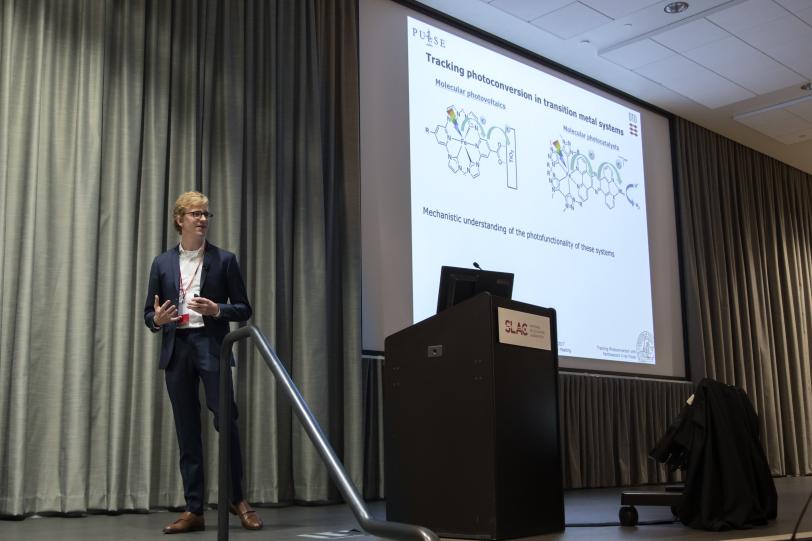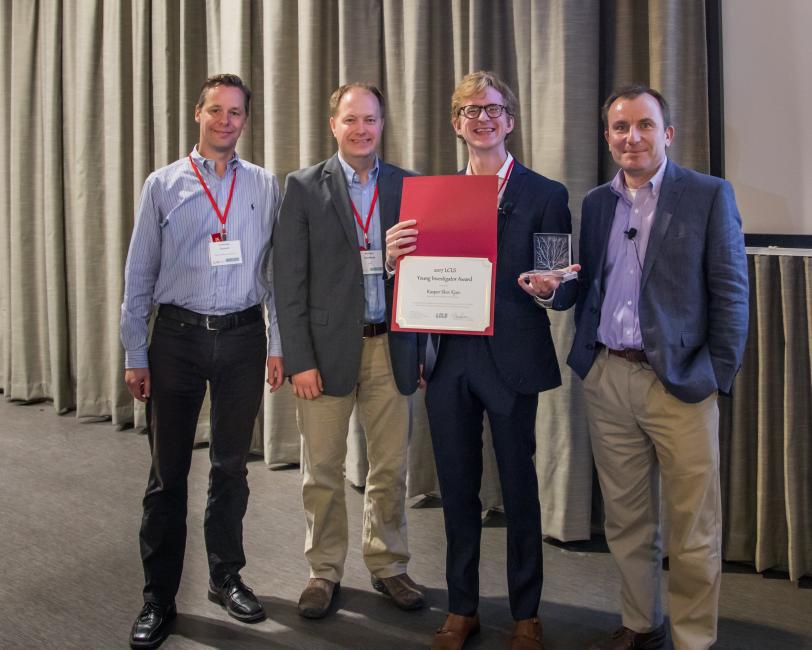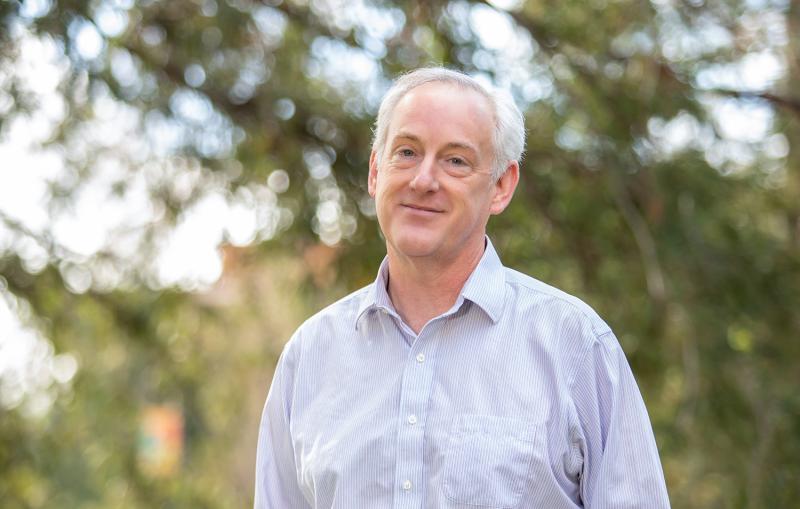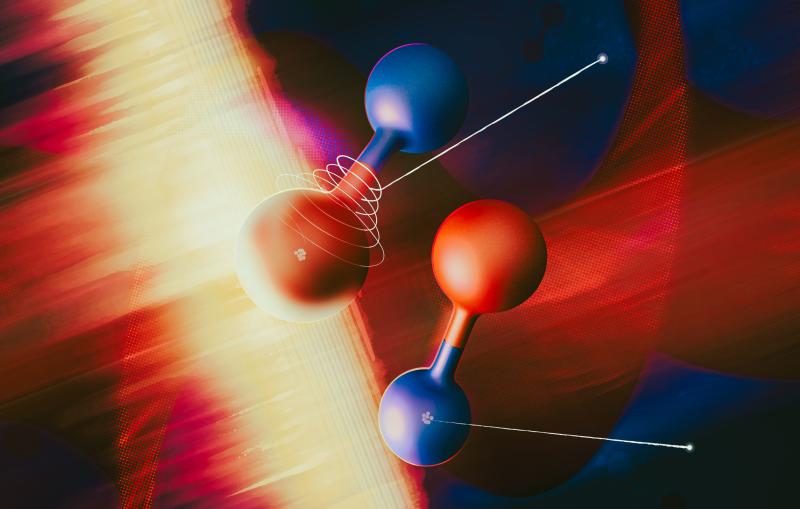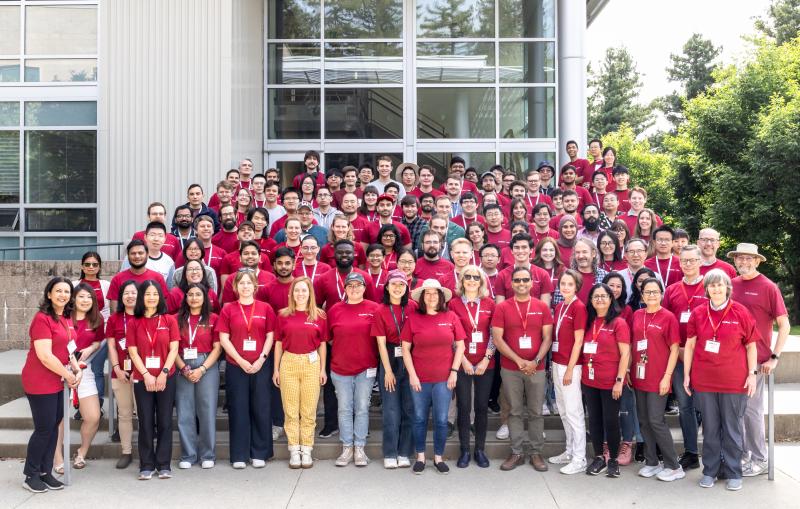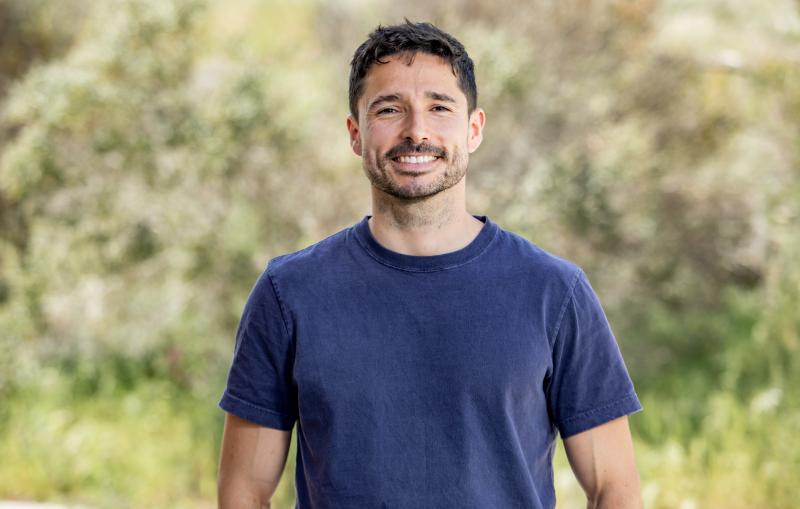Kasper Kjaer Wins First LCLS Young Investigator Award
The early career award from SLAC’s X-ray laser recognizes Kjaer’s work in ultrafast X-ray science.
By Amanda Solliday
Kasper Kjaer is the winner of the inaugural LCLS Young Investigator Award given by the Users Executive Committee of the Linac Coherent Light Source (LCLS). The prize recognizes scientists in the early stages of their career for exceptional research performed with the LCLS X-ray free-electron laser at the Department of Energy’s SLAC National Accelerator Laboratory.
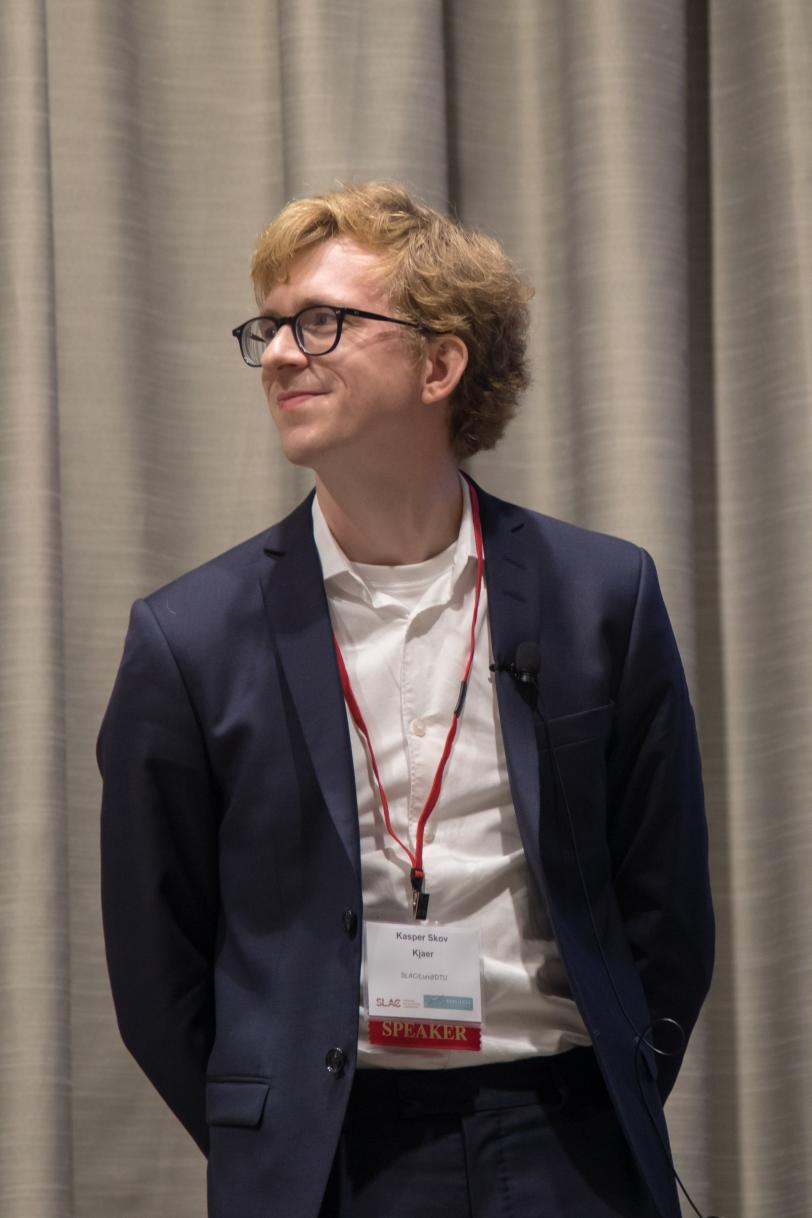
“With this award, we’re supporting the new ideas, new insights and new talent at our young facility,” said Mike Dunne, the director of LCLS.
Kjaer is a postdoctoral research fellow at Lund University in Sweden and at the Stanford PULSE Institute, a joint research center of Stanford University and SLAC.
He began conducting research at LCLS in 2011, and since then, Kjaer has participated in or led more than 25 experiments at the X-ray laser. His work focuses on ultrafast X-ray techniques that capture the structure and dynamics of molecules.
“We were very impressed with the large group of extremely talented and well-qualified young scientists competing for the LCLS Young Investigator Award, but Kasper stood out. He was nominated multiple times by the users’ community, and he has a most impressive list of publications as lead author. He got the clear top vote from the UEC,” said Christoph Bostedt, vice chair of the LCLS Users’ Executive Committee.
“It is great to see that so many young and aspiring scientists are active at LCLS, who can so greatly benefit from the facility and flourish in the new and exciting area of ultrafast X-ray sciences,” Bostedt added.
A Gifted Experimentalist
Kjaer became interested in X-ray science as a graduate student working with a team at the Center for Molecular Movies in Denmark that was preparing for the advent of X-ray free-electron lasers (XFELs). The team’s goal was to identify the scientific questions and develop the experimental tools that would benefit the most from the orders of magnitude improvements in intensity and time resolution provided by XFEL radiation.
“Not only have I worked with LCLS since it came online, but I was part of a group that was actively preparing for its arrival,” Kjaer said. “It’s been really fun to see how the facility has grown over the years.”
He earned his PhD in physics at the University of Copenhagen in Denmark. As a student and a postdoctoral researcher, he has published nearly 30 scientific papers in the field of ultrafast X-ray science.
Kjaer’s doctoral supervisor, Martin Meedom Nielsen, wrote in his nomination letter, “Over the last five years, Dr. Kjaer has become one of the most gifted XFEL experimentalists I know of, playing a crucial role as decision-maker during the extremely precious, and often hectic, 12-hour shifts.”
In his recommendation letter, Kelly Gaffney, Kjaer’s PULSE Institute advisor, wrote, “Kasper stands out for his highly impressive combination of technical excellence, scientific curiosity, aptitude for managing collaborations, and commitment.”
Watching Molecules in Motion
Kjaer’s research focuses on the dynamics of molecules, figuring out how light drives changes in their electronic states, and how this drives structural transformations in the molecules and their surrounding environment. In particular, he has specialized in experiments on molecular complexes relevant to solar energy applications and memory devices. And he’s spent the early years of his career tracking chemistry in real time, developing capabilities of X-ray lasers that capture the structure and changes of molecules.
“The free-electron laser is the best tool in the world to watch molecules performing an act. Whenever we do an experiment, we know that we are going to see something that no one has seen before,” Kjaer said. “And we keep finding new things. It’s really exciting, and that’s why I love doing what I do.”
Over the years, he’s helped develop experiments that pair two techniques - X-ray scattering and X-ray emission spectroscopy - in a way that allows researchers to simultaneously see the details of electronic states and molecular structure. This is now a standard method in the field of ultrafast X-ray science.
Kjaer looks forward to leading research that takes advantage of the upgrade path for the LCLS facility. LCLS-II, which is currently under construction, will increase the average power of the X-ray beam by a factor of 10,000. Subsequent plans seek to extend this capability to higher energy X-rays to provide atomic-scale structure.
“For the types of phenomena I’m studying, we really need higher energy X-rays that will give even better structural resolution,” Kjaer said. “We’ll be able to see these molecular changes, or dynamics, more clearly at the ultrafast timescale.”
The LCLS Users’ Executive Committee will present the honor to Kjaer at the 2017 LCLS/SSRL Annual Users' Meeting at SLAC. He will also give a plenary talk at the meeting titled “Mapping molecular excited state electronic and structural dynamics with the LCLS” on Thursday, Sept. 28. The talk will be broadcasted on the meeting’s livestream.
LCLS is a DOE Office of Science User Facility.
For questions or comments, contact the SLAC Office of Communications at communications@slac.stanford.edu.
SLAC is a multi-program laboratory exploring frontier questions in photon science, astrophysics, particle physics and accelerator research. Located in Menlo Park, Calif., SLAC is operated by Stanford University for the U.S. Department of Energy's Office of Science.
SLAC National Accelerator Laboratory is supported by the Office of Science of the U.S. Department of Energy. The Office of Science is the single largest supporter of basic research in the physical sciences in the United States, and is working to address some of the most pressing challenges of our time. For more information, please visit science.energy.gov.
